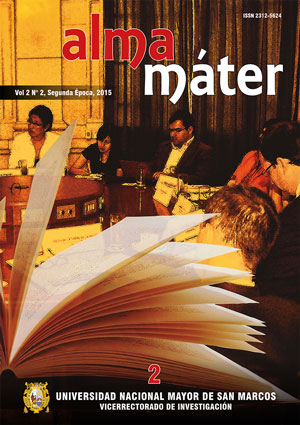STRATEGIES FOR VALUE ENHANCEMENT OF THE ARCHAEOLOGICAL SITE “CANTAMARCA” DEVELOPMENT OF SUSTAINABLE TOURISM IN THE PROVINCE CANTA
Keywords:
Cantamarca, Archaeological site, Strategies, Value, sustainable development, tourism.Abstract
Research by team members: “Tourism towards the Bicentennial” Cantamarca Archaeological Site (located in the province of Canta) developing a situational analysis in order to raise the processes and strategies to develop the enhancement of the archaeological site. Cantamarca comes from two words, the first “Canta” was the name of the people who inhabited this place, and “marca”, which means “people” or “place” turn the first word “Canta” is attributed the great hunters of vicuña, so the final name becomes complex in the translation of “People of great hunters vicuna.” According to historian Maria Tovar Rostworowski and Arqul. Carlos Arturo Farfán Lobatón mention that Cantamarca was built during the Late Intermediate Period (1100 AD) and survived the conquest of the Incas (1450), who the reorganized and expanded until 1550 when the new Spanish conquistadors relocated its residents in the present town of Canta, and finally abandoned Cantamarca. The archaeological site of Cantamarca, was declared Cultural Patrimony of the Nation by National Directorial Resolution No. 2006 051/ INC for conservation, preservation and promotion as a top tourist destination of the province.Downloads
Published
Issue
Section
License
Copyright (c) 2015 Niko Cruz Gonzales

This work is licensed under a Creative Commons Attribution-NonCommercial-ShareAlike 4.0 International License.

Alma máter segunda época by Vicerrectorado de Investigación y Posgrado is licensed under a Creative Commons Reconocimiento-NoComercial-CompartirIgual 4.0 Internacional License.
Creado a partir de la obra en http://revistasinvestigacion.unmsm.edu.pe/index.php/alma/index.
AUTHORS RETAIN THEIR RIGHTS:
a. Authors retain their trade mark rights and patent, and also on any process or procedure described in the article.
b. Authors retain their right to share, copy, distribute, perform and publicly communicate their article (eg, to place their article in an institutional repository or publish it in a book), with an acknowledgment of its initial publication in Alma máter segunda época.
c. Authors retain theirs right to make a subsequent publication of their work, to use the article or any part thereof (eg a compilation of his papers, lecture notes, thesis, or a book), always indicating the source of publication (the originator of the work, journal, volume, number and date).



